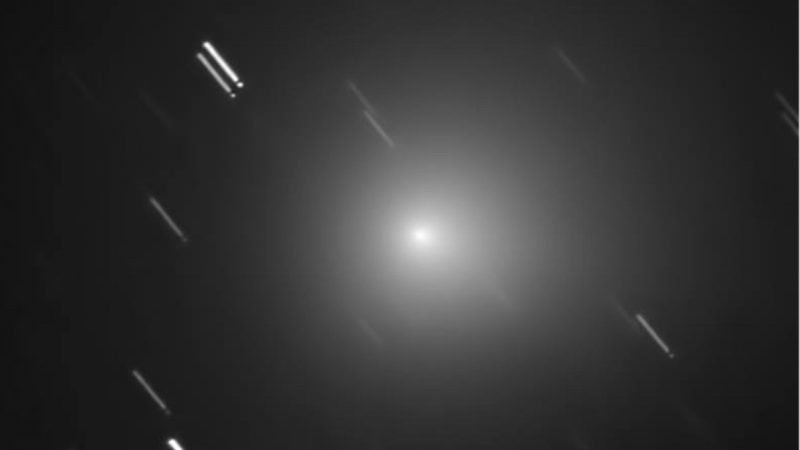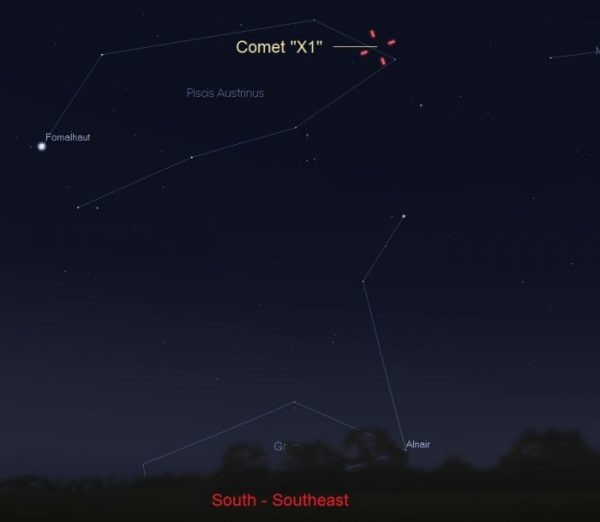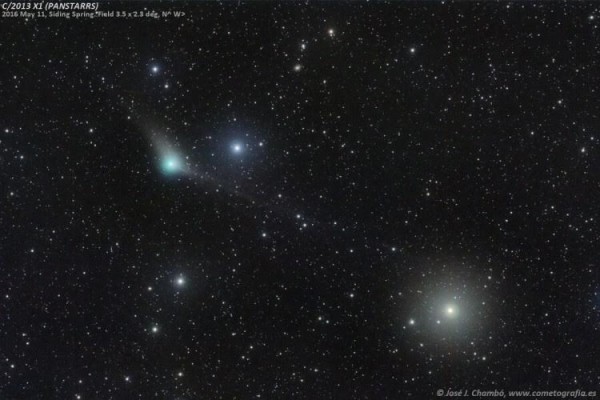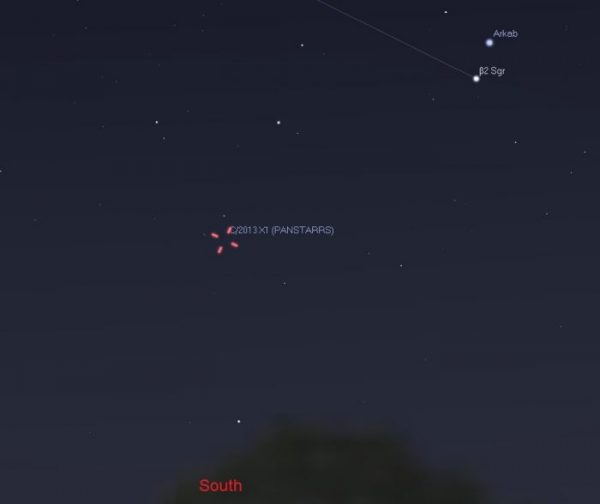
Comet C/2013 X1 (PanSTARRS) has slightly increased in brightness and observers are reporting the comet’s magnitude at around 6.8. That means it’s not visible to the unaided eye, but it is visible in binoculars and small telescopes. Comets have shown to be unpredictable, so monitoring is encouraged!
The comet is still approaching Earth and will pass distantly, at over 59 million miles (95 million km) from our planet, on June 21-22, 2016. The celestial visitor was recently seen from the Southern Hemisphere, but is now visible in Northern Hemisphere skies. This post has charts and other information that can help you spot the comet in the coming weeks.

During this month – June 2016 – Comet C/2013 X1 is visible with optical aid between the constellations of Piscis Austrinus and Sagittarius. From the Northern Hemisphere, that area of the sky is visible in the direction south-southeast before sunrise.
Since the comet is low in the sky, it’s essential to avoid visual obstructions. Trees or tall buildings on your horizon will hide it from your view.

Don’t expect to see a glamorous tail; the comet is showing modest twin tails in recent long exposure images, but visually, using a small telescope, it will look like a dim patch of haze or a small ball of cotton.
Still, it’s always fascinating to see a celestial visitor that came from the distant Oort cloud.
It’s also amazing to know that the fuzzy object is traveling though space at a speed of 112,742 miles per hour (181,440 km/h)!

The PanSTARRS 1 telescope in Hawaii discovered this comet on December 4, 2013. Comet C/2013 X1 reached its perihelion (closest to sun) on April 20, 2016.
Closest approach to Earth will happen on June 21-22, 2016, but by then the comet is very low in the sky. Plus its closest point to Earth coincides with the interfering light from a full moon.
Observers in the southern United States, and especially observers in even lower latitudes, will have a better position to try to see the comet (with optical aid) during closest approach.


Bottom line: The illustrations on this page can help you find Comet C/2013 X1 (PanSTARRS), whose closest approach to Earth is June 21-22, 2016.











